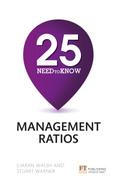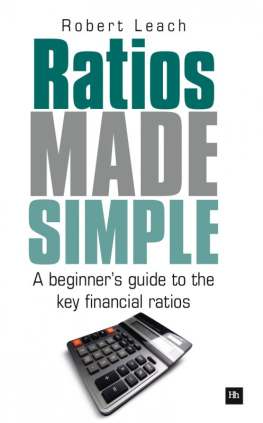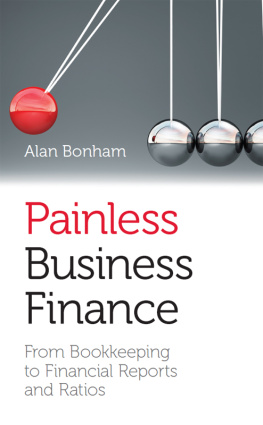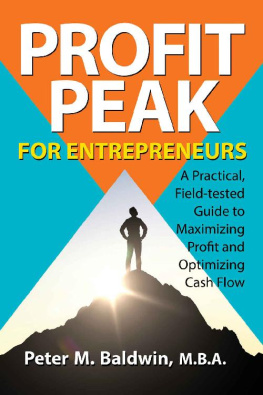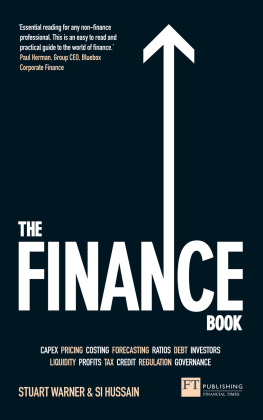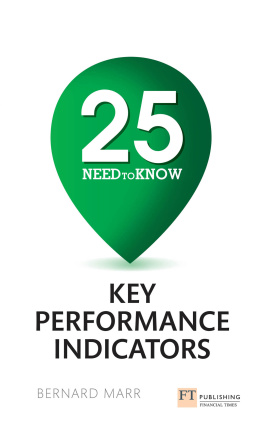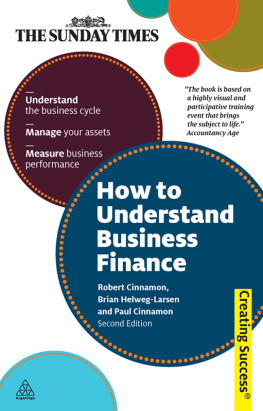About the authors
Ciaran Walsh was formerly Senior Finance Specialist at the Irish Management Institute, Dublin.
Ciaran trained both as an economist and an accountant (BSc (Econ) London, CIMA) and had 15 years industrial experience before joining the academic world.
His work with senior managers over many years has enabled him to develop his own unique approach to training in corporate finance. As a consequence, he has lectured in most European countries, the Middle East and Eastern Europe.
His main research interest is to identify and computerise the links that tie corporate growth and capital structure into stockmarket valuation.
Ciaran lives in Dublin and is married with six children.
You can contact Ciaran via email at ciaranwalsh@eircom.net
Stuart Warner is a chartered accountant, author, non-executive adviser and trainer.
Stuart delivers finance-based training programmes around the world to both finance and non-finance professionals. Over his career, Stuart has taught thousands of trainee accountants to pass their professional exams for six different accounting qualifications. He has helped thousands of qualified accountants keep up to date and meet their CPD qualifications as well as training many people from non-finance backgrounds to understand financial matters.
Stuarts goal is to help businesses increase productivity and profits through innovative and engaging finance training. He is a keen advocate of experiential-based learning using business simulations.
He is the author of Finance Basics (Collins Business Secrets series); Making Budgeting Work in the Real World (NelsonCroom); and co-author of Dragons Den: Grow Your Business, which supports the BBCs Dragons Den programme.
Stuart is a graduate of management sciences from UMIST and became a chartered accountant whilst working at PriceWaterhouseCoopers.
You can find Stuart on LinkedIn or at: www.financial-fluency.co.uk or via email at: kmr@financial-fluency.co.uk
Top 5 dos and donts of using financial ratios
Top 5 dos
1. Do: use the right benchmarks
A ratio is meaningless and potentially misleading on its own. To interpret a ratio properly it is essential to use an appropriate benchmark.
Suitable benchmarks can be from internal or external sources. Internally: historic data or another product, service, customer or geographical territory make the best benchmarks. Externally: competitor information (if obtainable), industry data, external analyst reports and government statistics can be useful.
Be careful when comparing to the industry norm. This will be an average and include some extreme top performers and extreme poor performers which may distort the average. It is better to compare against a pre-selection of known good performers which provide the best comparison against your business.
At the same time it is important to remember that no two businesses are the same even if they are direct competitors in the same industry. They could be financed differently and have different tax rates, for example.
2. Do: use an appropriate number of ratios
There is a common desire for businesses to focus on one key ratio. In this book we talk about one of the most popular sole measures, return on equity (one ratio there is a danger of missing out the essential feedback provided by using a variety of ratios.
Whereas it is useful to have a primary ratio, using a portfolio of supporting secondary ratios provides a fuller picture of a business. Additionally, secondary ratios can help to read between the lines and make sure the whole organisation is performing optimally.
A useful analogy is a car dashboard where the speedometer is the primary focus (or key ratio). However, the fuel gauge, tachometer, odometer, oil temperature, oil pressure and engine warning lights provide other essential information which affects the performance of the car.
At the other end of the scale is the symptom of analysis paralysis where businesses monitor so many ratios that it is difficult to see the wood for the trees, let alone spot the primary measure.
Returning to the dashboard analogy, many non-pilots would find it challenging to navigate an instrument panel within the cockpit of a modern aircraft.
3. Do: consider timing issues
The financial statements on which many ratios are based are produced at a point in time. The balance sheet (covered in ) is a snapshot of the business on a particular day. The position may be different the day before or the day after.
Therefore, it is important to look at trends in ratios versus interpreting ratios at a single point in time.
Seasonality may impact certain businesses. For example a calendar retailer will have high inventory as they build up stocks towards the year-end and hopefully low inventory by the time it gets to February.
Ratios can be influenced by a one-off event. For example, sale of a large asset prior to a companys year-end may boost its bank balance temporarily.
Similarly, there may be a lag in results. A company may have raised debt to fund a sound and profitable investment which will not payback for a number of years.

